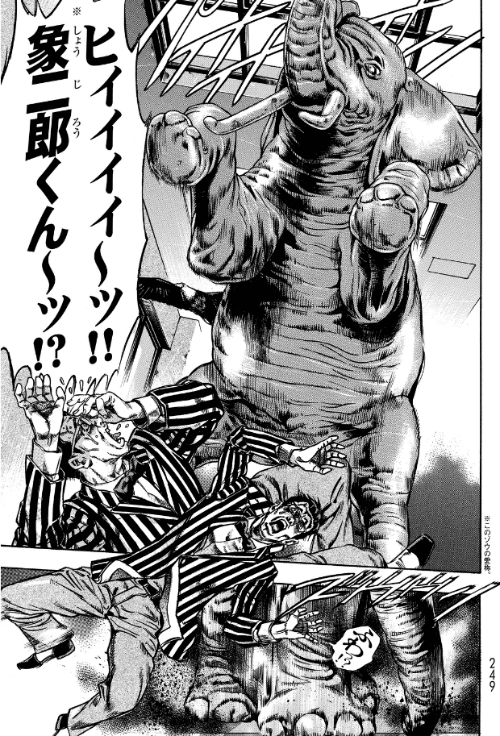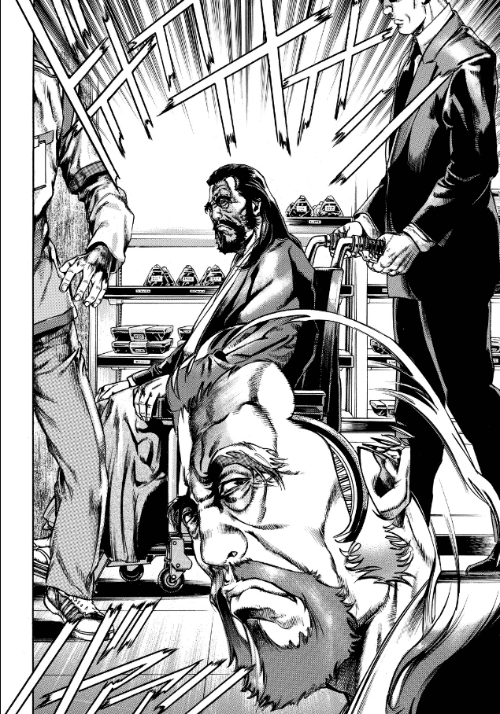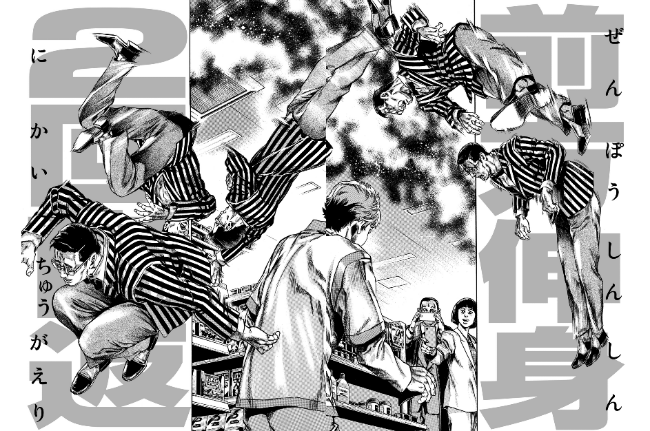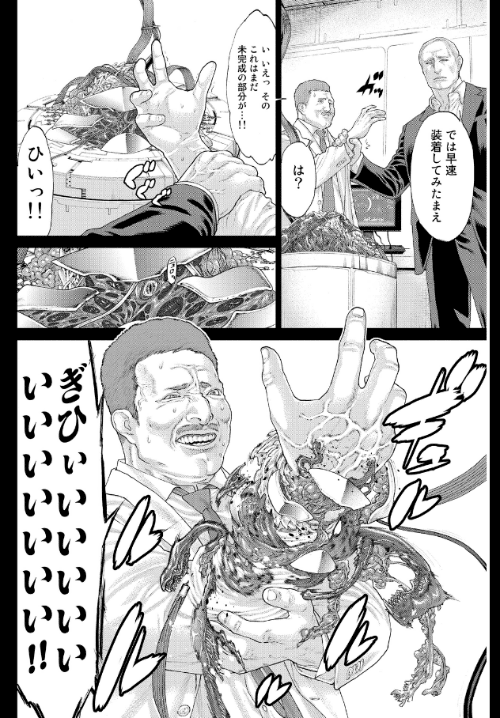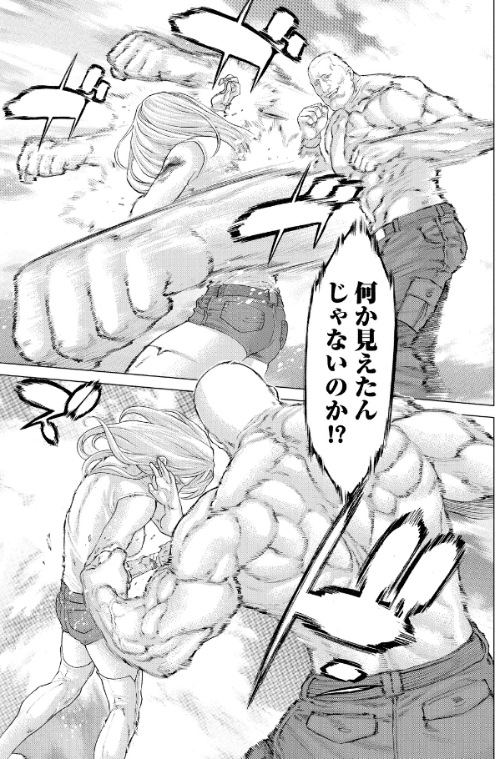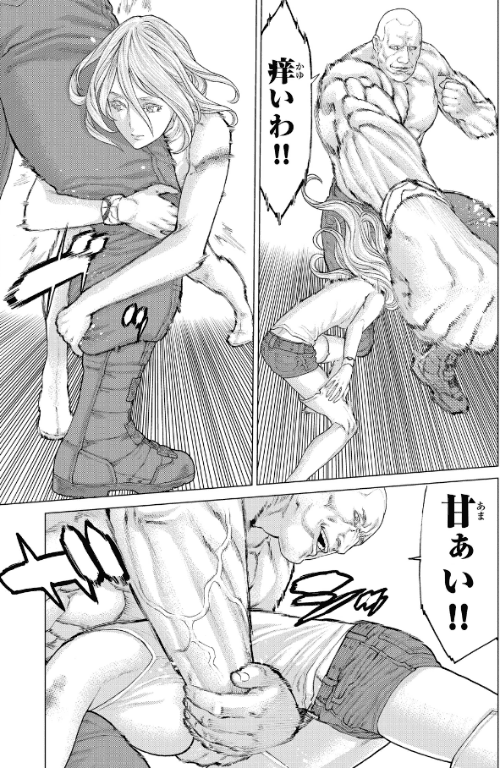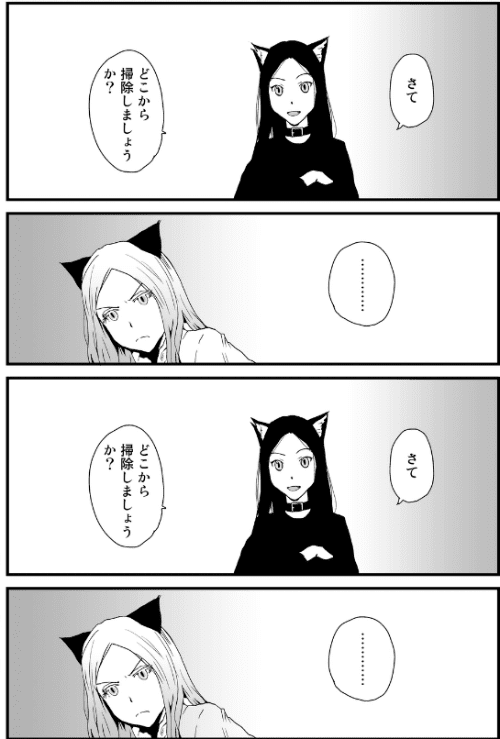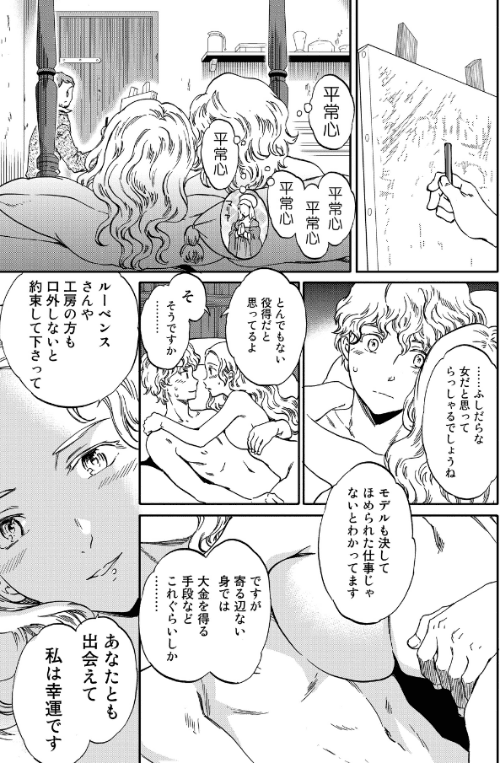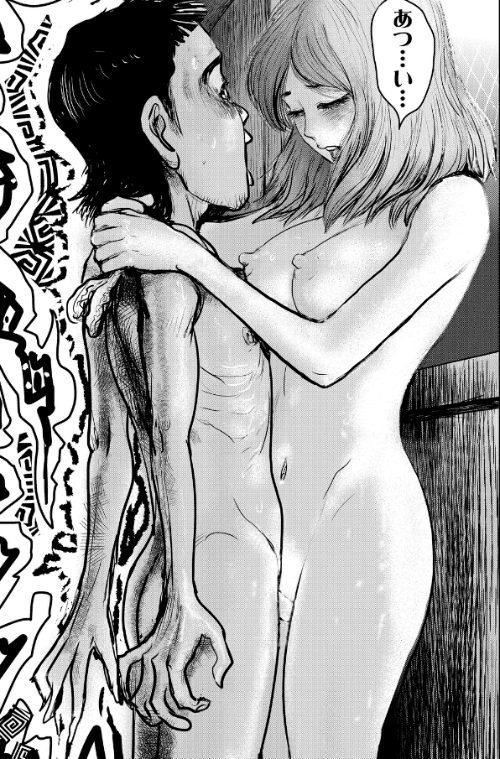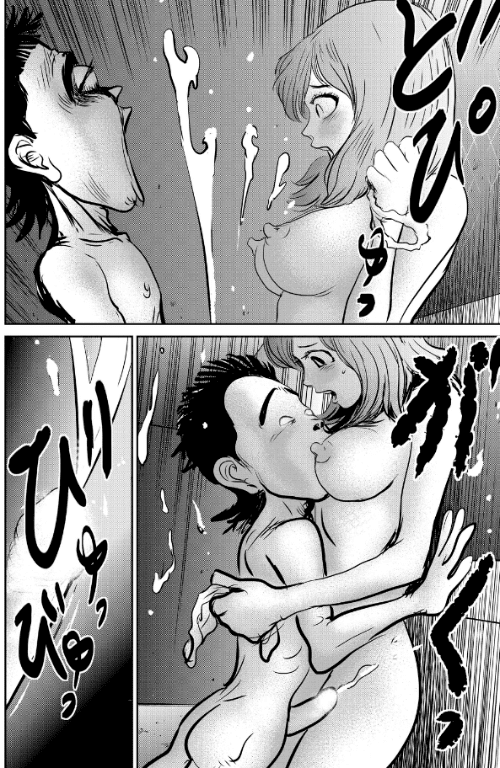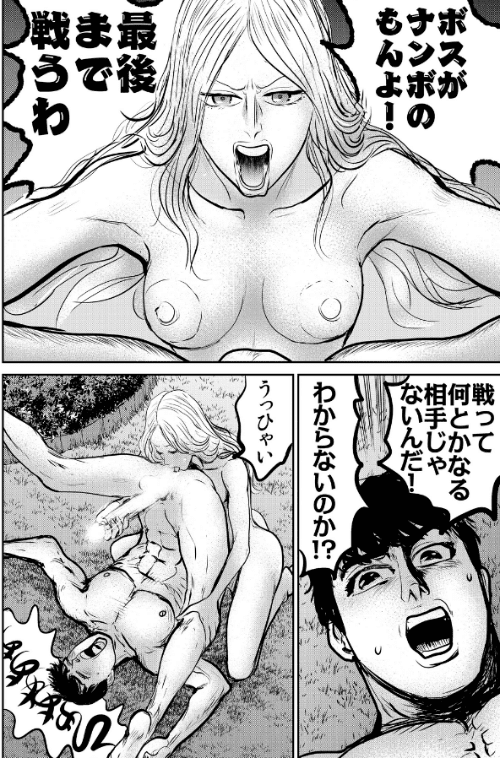I read exactly one comic over my holiday break: Die Wergelder, a Kodansha omnibus package of the two existent Japanese collections for a new-ish series by Hiroaki Samura, creator of Blade of the Immortal. I say 'new-ish' because the series began in 2010 in a quarterly magazine, Nemesis, which had since gone bimonthly. That leaves, at most, the opportunity for Samura to release six chapters a year, and Die Wergelder has not appeared in every issue of Nemesis - until 2012, Samura had Blade to finish, and now he has Nami yo Kiite Kure, a comedy-drama set in the world of local radio(!) that runs in Kodansha's monthly seinen magazine Afternoon.
As of q3, 2015, Afternoon has a reported circulation of 74,444 copies. I don't know what the circulation of Nemesis is, but I do know it's an 'older audiences' offshoot of another Kodansha magazine, Shōnen Sirius, which for the same period boasted a reported monthly circulation of... 9,000. Given that a spinoff is unlikely to outsell its parent, particularly with half as many issues coming out per year, it can therefore be theorized that Nemesis is doing low Image Comics numbers, though I presume the collected editions of Die Wergelder perform fine on their own with Samura's devoted readership.
I wish I liked Die Wergelder as much as Sarah Horrocks did, but as early as chapter 2 -- when a cutie teen girl yakuza torturer electrocutes a misbehaving peon by sweating her perky way through a lethal exercise routine -- I got the distinct impression I was witnessing a fetish-driven toss-off; your own enthusiasm for the book can likely be guessed by counterbalancing your appreciation for Samura's drawing (which remains terrific) with your tolerance for sexually violent content, one early bit of which (involving a kidnapped woman swaddled in black submission garb who eventually gets her head shot off) is dropped onto the page for no discernible reason other than to keep the reader awake through scenes of expository overelaboration worthy of Masamune Shirow.
That said, I absolutely loved Samura's Afterword - three brief paragraphs accompanied by twenty explanatory footnotes, a good number of them dedicated to minutiae of Nemesis. At one point we're advised that the free giveaway contents in the magazine are "very easy to win" -- a more rueful euphemism for a low readership can scarcely be imagined -- while the whole of the piece more-or-less openly states that Samura was only recruited into the magazine in the first place because he knew someone in that division's editorial team and, well, they really needed some reliable shit at launch.
This piqued my interest. What kind of stuff was running in Nemesis that *wasn't* so reliable? I'd never even heard of the magazine - what was its mission? What kind of artists did it favor? Before I knew it, I'd bought a digital edition of the most recent issue: #25, Dec. '15, weighing in at north of 400 pages. Below are my findings, grouped into very helpful and completely non-arbitrary categories.
--
1. The Peer Favorite
Naturally, the first thing I checked was whether Die Wergelder was actually still running. It is, and the image up top is from the most recent chapter, 19, which suggests a new Japanese collection is two installments away, for a potential late summer/fall arrival.
Next, I checked to see if there was anything by fellow contributor Kotaro Ohkoshi, an unprolific artist in the Suehiro Maruo vein whom Samura mentions admiringly in the Afterword. No luck.
Then, I checked for Kyoaku Gakuen, a series mutually recommended by Samura and Ohkoshi.
I could immediately understand why these artists were so impressed - Kyoaku Gakuen is a loud, oppressive, exaggerated comedy high on domineering energy. The creator is one Katsuhiro Nagasawa, who's been working professionally since the '80s; his style still carries some of the weighty force of superstars from that decade like Tsukasa Hojo (City Hunter) or Tetsuo Hara (Fist of the North Star), though the violent school setting brought to my mind the yet-earlier Otoko Gumi of Ryōichi Ikegami. However, Nagasawa's school is one specifically for world-class villains, allowing for even busier mayhem.
This issue's chapter focuses on a bespeckled nebbish in a striped jacket who seethes at all the threatening activity in the school, from rampaging zoo animals to people having sex right in the hall. We can surmise that such displays of abandon have roused his jealousy, which he takes off campus to his local NEMESIS mini-mart, for all your comics and convenience needs.
Inside -- from what I can surmise, given my extremely weak literacy -- he gets the delightful opportunity to finally be a real dangerous guy by lording it over a hapless employee. The scene is observed by a younger guy, a special investigator undercover as a student, thus acting as reader surrogate/straight man.
Alas, in the midst of his tirade, the would-be big man catches the eye of somebody much tougher, prompting him to rocket into the air for an acrobatic display of public remorse.
That eye superimposed over the retreating man is very Steve Ditko, but the art of Kyoaku Gakuen functions in a manner I associate almost exclusively with manga: exploiting the stiffness, the toughness of muscular art for comedy by forcing it into cartoon ends for which it is plainly inappropriate. I'm not sure if Nagasawa would be capable of drawing that guy soaring through the air in a more fluid manner, but at the same time he's aware that his 'failure' to make the drawings seem less stiff is appropriate in depicting this traditionally emasculating situation - muscularity as futility. Knowing these limits and working around them is one thing that wins you peer approval.
--
2. The Guy the French Have Heard Of
Given the circumstances, it probably goes without saying that little from Nemesis has been seen in English. That said, no less a Eurocomics establishment than Glénat has dealt extensively with one contributor: Masato Hisa, whose series Jabberwocky has possibly enjoyed more security in French album form than in Japanese, where it's bounced among Kodansha magazines. The iteration running in Nemesis is formally a sequel, Jabberwocky 1914.
The difference is immediately clear. Hisa works in a broadly cartooned style oscillating between elements of caricature and characters built up from tubes and circles, very animated. There's also an extensive use of silhouette and solid black, which superficially evokes Mike Mignola, though you won't see any studies of movement in Hellboy as dynamic as this old dude inhaling, a two-page process deploying a nude inset panel to lend certainty to his body language, and added power to his climactic release:
Of course, this type of narrative decompression (two pages on breathing) is somewhere just below big eyes and speed lines on the list of stereotypical 'manga' attributes, but at the same time it's easy to see how Hisa's execution of same could appeal to a Western publisher. There's supposedly a lot of references to global literature and history throughout Jabberwocky, with a surreal touch added by the presence of humanoid dinosaurs, but this chapter is mostly a big ol' action scene with reptilian musicians playing a set that drives military guys to kill each other, after which some action-hero types arrive to kick scaly ass; you could have told me this was translated to Japanese from 2000 AD and I'd have believed you.
--
3. The Guy(s) the Japanese Have Heard Of (But Maybe Not Many of Them)
None of these series were all that heavily promoted in Nemesis #25; we can presume that the magazine's readers are used to seeing them. More attention is paid on the cover and in terms of page count real estate to newer concepts:
Here we are introduced to Mugen Ningen ∞, a debuting serial from Ryuuta Yoshinaga, who's been an irregular contributor to Afternoon since 2003; I think it's safe to say he's pretty obscure, though I quite like the delicacy of his art, built up from hatching and scratching and wavy, doodly lines, which he employs both for menacing, weathered horror effect (above) and off-handed panels depicting the rural life into which his heroine ventures, only to be threatened by aggressive men and bucolic mysticism.
Elsewhere, waaaaay on the other end of the aesthetic field, we have 68 pages of Golosseum (that's Kodansha's official English title), a Russian-set martial arts opus prominently featuring a severely jacked Vladimir Putin.
No idea if the Putin character is a major force in the series, but he gets to do some total supervillain stuff like forcing an underling's hand into a sinister experiment to test its success.
The artist here is Yasushi Baba, who is one of those artists who had a crazy megahit that ran for over 50 volumes across prequels and the like -- Karate Shoukoushi Kohinata Minoru, a martial arts series -- but is still mainly known in the west via the scanlation community. I've not read the scans, though I do get the impression his art wasn't quite so mannered before; the name of the game here is terrifying diesel guys and women with huge breasts, archly posed through long fight scenes with the icy precision of an instructional guide.
I guess the appeal is that you can appreciate the verisimilitude of the strikes and blocks this way? I'd be more interested in seeing Baba's sculptural approach to character design set to increasingly caricatural ends, where I think it might have some interesting effect. But I guess when you're known for karate comics, readers come expecting karate. Was Baba recruited in the same vaguely desperate manner as Samura? Is Nemesis a place for manga artists to just cut loose their whims?
--
4. The Smut Artist(s) Going Legit
Speaking of illustrative virtuosity:
Ha - actually, some of you might recognize this guy. It's Eros Comix veteran Benkyo Tamaoki of The Sex-Philes, one of the 'quality' porn series that probably wound up hidden behind copies of Spunky Knight and Silky Whip Extreme at your local retailer. Tamaoki has always sort of toed the line of respectability; his "Editor Woman" story in the 2000 anthology Secret Comics Japan prompted a lot of 'why is there porn in this?' reactions, while his Blood: The Last Vampire 2002 project spiced up its anime tie-in action with a strong sexual element.
In contrast, above you see the most sexual image in December's Neko Machi Shuju, a dialogue-driven comedy about a pair of catgirls dealing with life. Tamaoki's has never been the busiest style, relying instead on gestural 'acting' and dialogue, but now I'd be pretty surprised if he was even using assistants; maybe this sort of ultra-basic digital drawing is where his art has been developing towards anyway.
But you don't actually need to switch much of anything up to move from erotic comics to mainline stuff in Japan; several seinen magazines have erotic specialists delivering variants on their established styles, like Gengoroh Tagame, whose Otouto no Otto series with Futabasha concerns gay marriage and everyday child-rearing. Similarly, Nemesis finds "Cuvie" -- an ero artist active since the early '00s -- at the head of Color Me Rainbow (again, that's Kodansha's English), a series about artists' muses.
Cuvie's is a very clean, very traditional approach; you could easily imagine her drawing nothing but historical comics about painters, although she definitely plays up the texture of that model's generous bosom smooshing up against the bare, lithe chest of that rather young man coerced into bed to help with the pose and delightfully thinking to the Virgin Mother for guidance. It may seem unnecessary to even have a magazine in which artists can 'cut loose' when so much actual porn is available in the manga world, but ero comics have a way of stumbling into favored formula: masturbatory expectations, by which the 'usefulness' of the works are gauged. The best conception of Nemesis, then, is as an avenue for liberation, both from the expectations of how Japanese comics should look -- the stable, as I hope I've shown, is visually diverse, right down to Samura, whose 1990s entry into North American translation was doubtlessly aided by his own deviations from the norm -- as well as the devices by which smut can be freighted. This is not an abnormal mission, but at its best Nemesis pushes it harder than most.
--
5. The Legit Artist Going Smut
The best thing in issue #25 of Nemesis, by a very wide margin, is chapter 23 of Broadway of the Dead, a zombie horror satire by Shinichi Sugimura, a very respected artist who did a well-received series in the early '90s titled Hotel Calforinia, about a remote inn that (maybe?) becomes sort of an autonomous nation (unless I'm wrong; I don't have it). He'd later win a Japan Media Arts Festival excellence prize for his superbly-titled short story collection All Nude, and more recently completed a long crime series, Dias Police, with Takashi Nagasaki, Naoki Urasawa's longtime editor and co-writer.
From what I can gather, Broadway of the Dead spun out of one of the Nemesis launch series, Night of the Raging Woman, which saw nerdy shut-ins menaced by flesh-eating ladies. Broadway then evolved the concept into a broader commentary, substituting the mall from Romero's Dawn of the Dead with the Japanese otaku mecca Nakano Broadway, which becomes similarly occupied by the living dead.
Then, in chapter 23, the survivors all fuck.
The entire chapter juxtaposes explicit zombie battling with explicit sex with a comic alacrity I've never quite seen before. Characters are overwhelmed with lust, throwing themselves at each other and suffering massive orgasms that fling them down stairs, semen flying in exactly the same manner as gore and grue in a normal horror spoof. Obviously, the key is in Sugimura's art, his characters' bendy bodies convulsing in a manner that joins living people with zombies. It's so utterly goofy and fun, men and zombie alike drawn as individuals - even when he errs on the side of designing his women as traditionally 'sexy' (and he does), when was the last time you saw different-sized areolas on different people in a sex & violence comic?
These are consecutive pages; the moment her tongue penetrates his anus, helicopters massacre the living dead at Nakano Broadway. In terms of sheer velocity, of artistic aptitude and reckless drawing power this is so far beyond any 'transgressive' comic I've read in English lately it's absolutely absurd. Every page of the comic is like this! Surely I've found the best result for Nemesis here. Die Wergelder shows that Japanese comics are still large and monied enough that an opportunity to cut loose and behave badly can be less the aesthetic feint of American indie comics (where nobody has a prayer of making serious money anyway) than exactly what it seems like on the surface: a desperation gambit played on behalf of a small-circulation magazine by people who could be (and in Samura's case are) doing other things with their time.
But at the same time, this brand of seinen can evade all formula, and force its creator to take aim at rapture.
***
PLEASE NOTE: What follows is not a series of capsule reviews but an annotated selection of items listed by Diamond Comic Distributors for release to comic book retailers in North America on the particular Wednesday identified in the column title above. Be aware that some of these comics may be published by Fantagraphics Books, the entity which also administers the posting of this column, and that I also run a podcast with an employee of Nobrow Press. Not every listed item will necessarily arrive at every comic book retailer, in that some items may be delayed and ordered quantities will vary. I have in all likelihood not read any of the comics listed below, in that they are not yet released as of the writing of this column, nor will I necessarily read or purchase every item identified; THIS WEEK IN COMICS! reflects only what I find to be potentially interesting. You could always just buy nothing.
***
SPOTLIGHT PICKS!
Perfume of Lilacs: Two today from the UK's Soaring Penguin Press, maybe best known at the moment for the Meanwhile... anthology (in which Gary Spencer Millidge's Strangehaven runs), but here dipping into translated comics from Quebec. A 2010 debutante book from cartoonist and illustrator Samuel Leblanc, Perfume of Lilacs finds a teen boy tending a garden with his saddened aunt, with 'shocking' and 'taboo' themes of emerging sexuality, per the publisher. Preview; $25.99.
It's Hard to Be a Girl: Both of these comics, incidentally, originated with Mécanique Générale, which also publishes work by Pascal Girard (subsequently brought to English by fellow Canadians at Drawn and Quarterly). This 2014 release from Estelle "Bach" Bachelard is a slice-of-life comedy concerning the daily travails of a young professional woman and her partner. A sequel has since been released in French but this 136-page edition only covers t.1. Preview; $26.99.
--
PLUS!
Girl Crazy: "Joe, is it really a good idea to put a lot of sexually explicit images in a shopping list column that some people use for strictly utilitarian purposes?" All I can say, hypothetical reader, is that I'm carrying on the great tradition of former Journal editor Dirk Deppey - the tradition of dropping sexy JPEGs wherever, because that is the stuff of freedom. Also, there's not a lot of noteworthy new comics out this week. Still, the budding historians among you should take note of this Dark Horse hardcover, collecting a 1996 miniseries Gilbert Hernandez released with the publisher in the immediate wake of completing the original 50-issue run of Love and Rockets; it was still unusual then to see Hernandez operating outside of Fantagraphics, and the adventuresome glamour girl SF z-movie theme of the work read then like a momentary frolic. Hernandez has since made inter-genre work of this sort a regular thing, so it may be interesting to revisit an earlier manifestation of that impulse. Samples; $17.99.
Naruto: The Seventh Hokage and the Scarlet Spring: What, you thought Naruto was over? YOU FOOL. Some of these champion-selling boys' comics live forever though spinoffs and greater media adaptation/extrapolation, and I'm sure everyone at Shueisha (to say nothing of English publisher VIZ) would be thrilled to have another Dragon Ball Z in the garage. Thus, Masashi Kishimoto quickly chased the completion of his original Naruto series with this one-book coda serial, a 'next generation' project complimenting a similarly-conceived animated film released to theaters in mid-2015. One of the screenwriters on that movie, Ukyō Kodachi, will be teaming with one of Kishimoto's former studio assistants, Mikio Ikemoto, to administer an official sequel comic later this year; $9.99.
Swamp Thing #1 (of 6): American superhero holdings, on the other hand, are expected to dawdle on perpetually by virtue of their corporate ownership, even if the original conception was more in line with the lineage of horror comics. Here we see artist Kelley Jones -- one of the most popular Batman illustrators of the 1990s, in good part due to his horror leanings -- working with writer Len Wein on a revival of the tragic muck monster character co-created by the latter. Granted, the last experience I've had with Wein was his surreally awful script to Before Watchmen: Ozymandias -- and, to be honest, DC Universe: Legacies wasn't much better -- but I'd be curious to see what this looks like, at least. Preview; $2.99.
The Art of Ploog: Your book-on-comics of the week, a 9" x 12", 320-page hardcover Kickstarted by Pittsburgh's Friedlander Publishing Group (FPG). Mike Ploog was a very popular specialist in horror and fantasy-tinged comics of the 1970s, who largely withdrew into feature film production work -- one good bit of trivia is that Ploog did storyboards on The Unbearable Lightness of Being -- so it'll be nice to have a weighty career survey around; $49.00.
Alter Ego #137: And finally, here is a new issue of this TwoMorrows magazine, sporting a long interview with Jim Shooter on his first decade in comics. Hey, it'll be lively. Preview; $8.95.
--
The front page image this week is from Golosseum, a manga serial by Yasushi Baba. It is not presently available in English.



